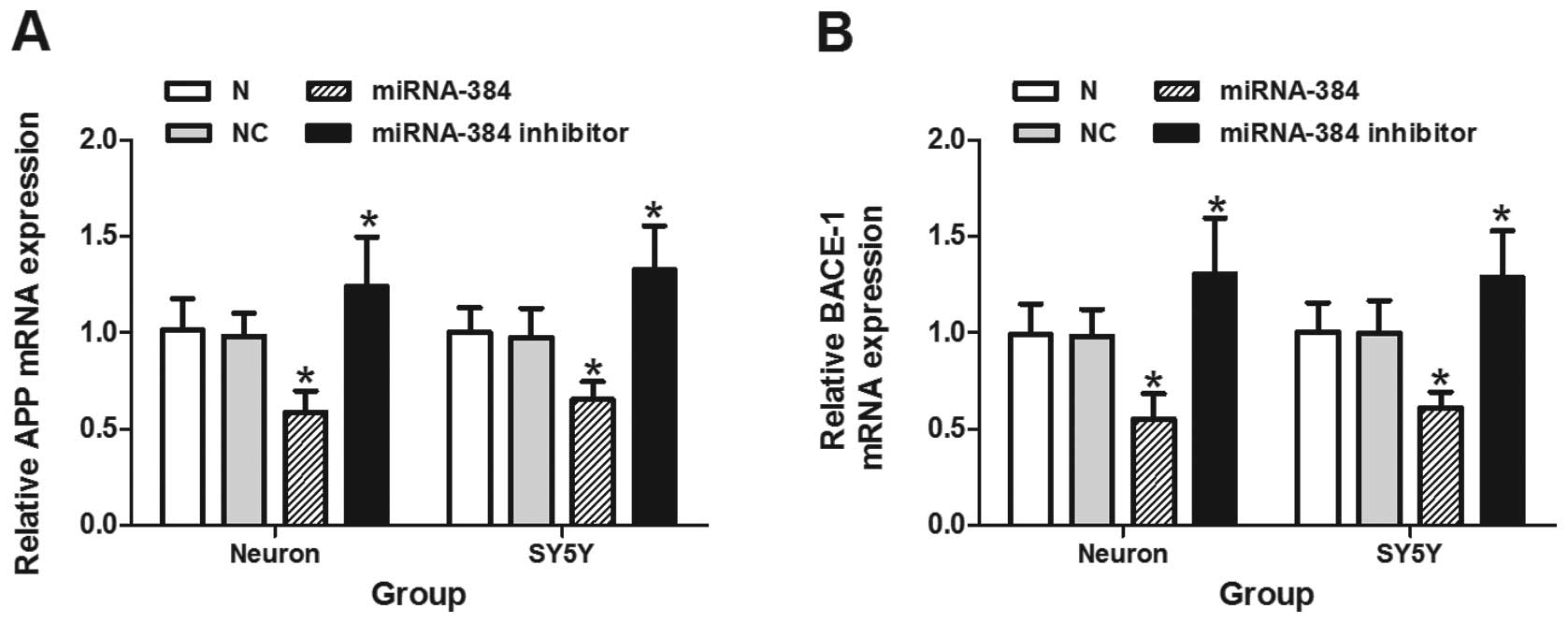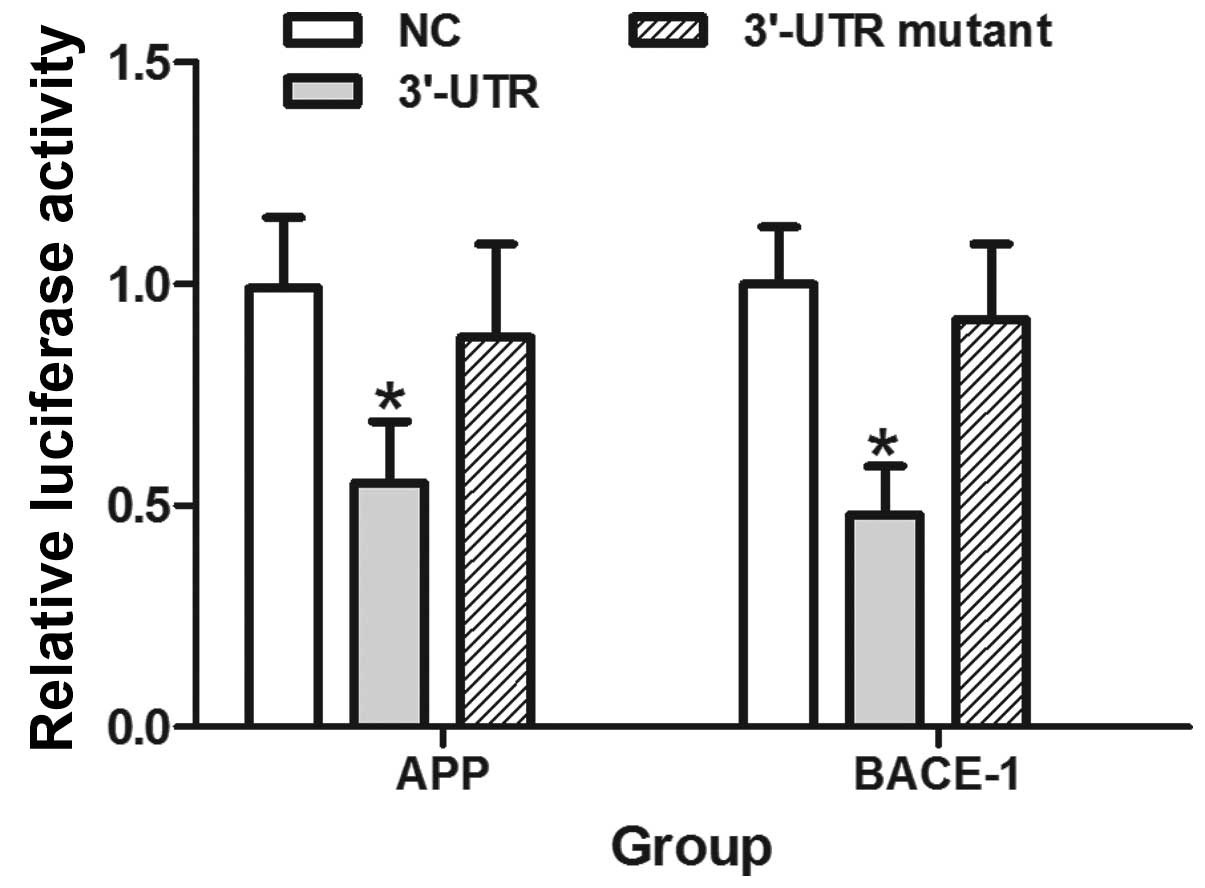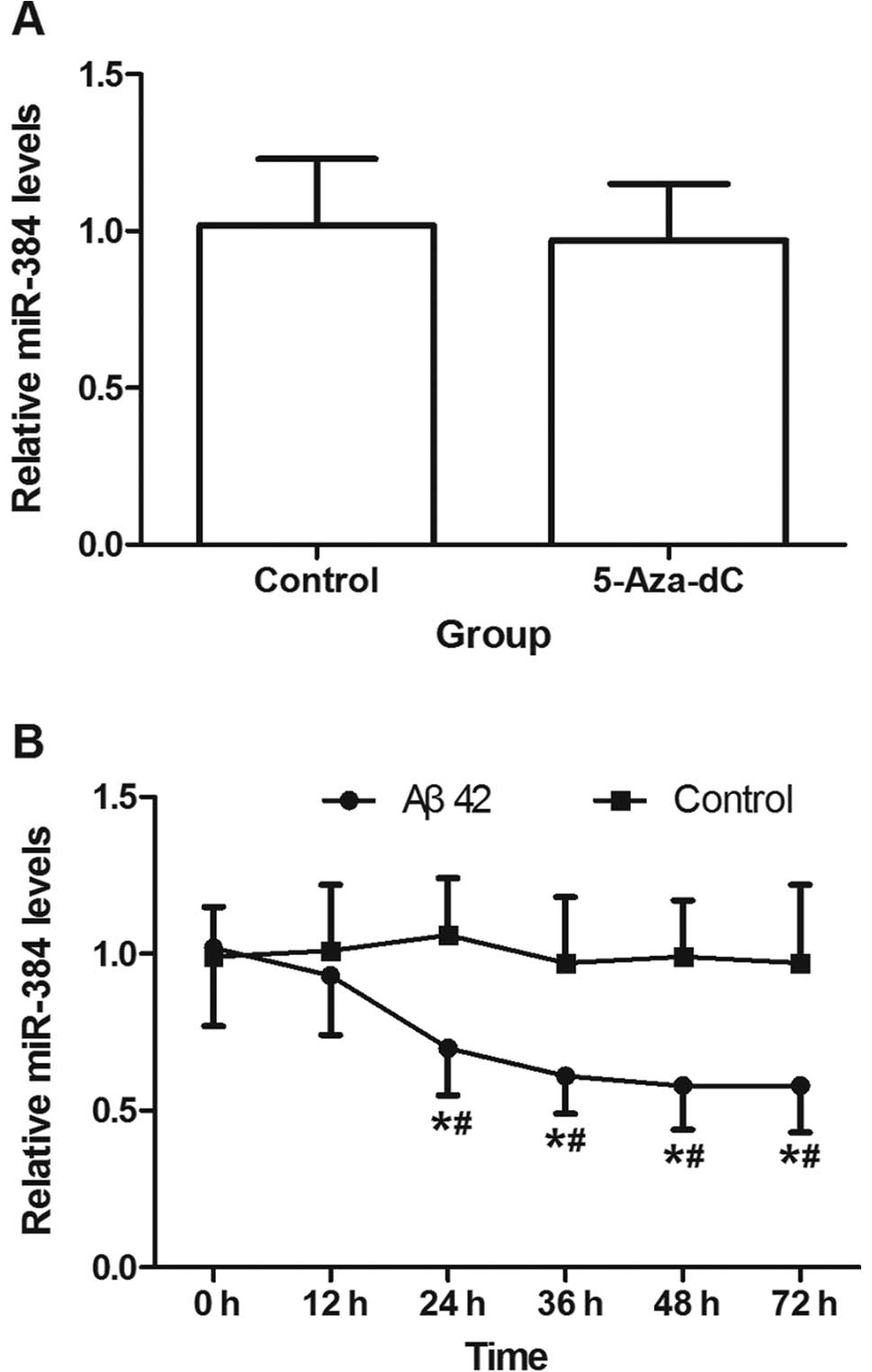MicroRNA-384 regulates both amyloid precursor protein and β-secretase expression and is a potential biomarker for Alzheimer's disease
- Authors:
- Published online on: May 13, 2014 https://doi.org/10.3892/ijmm.2014.1780
- Pages: 160-166
Metrics:
Total
Views: 0 (Spandidos Publications: | PMC Statistics:
)
Total PDF Downloads: 0 (Spandidos Publications: | PMC Statistics:
)
Abstract
Amyloid precursor protein (APP) and β-site APP cleaving enzyme (BACE-1) play important roles in the pathogenesis of Alzheimer's disease (AD). In this study, using bioinformatics analysis, we demonstrate that miR-384 is a microRNA (miRNA or miR) predicted to potentially target the 3' untranslated regions (3'-UTRs) of both APP and BACE-1. SH-SY5Y cells were transfected with miR-384 mimic oligonucleotide, miR-384 inhibitor oligonucleotide, or a non-specific control siRNA. We found that the overexpression of miR-384 suppressed the mRNA and protein expression of both APP and BACE-1. The miR-384 inhibitor oligonucleotide induced the upregulation of APP and BACE-1. The activity of BACE-1 was altered following the change in its protein expression. The binding sites of miR-384 on the 3'-UTRs of APP and BACE-1 were identified by luciferase assay. Furthermore, cells were treasted with amyloid-β (Aβ)42. Aβ42 downregulated miR-384 expression, leading to the continuous reduction in miR-384 expression. In addition, using a mouse model of AD, as well as patients with mild cognitive impairment (MCI) and dementia of Alzheimer's type (DAT), we examined the levels of miR-384 in cerebral spinal fluid (CSF) and serum. Patients with MCI and DAT had lower blood miR-384 levels compared with the controls. In addition, patients with DAT had lower blood miR-384 levels in blood compared with the MCI group. We also found decreased miR-384 expression in the several cerebral spinal fluid (CSF) of the patients with DAT. Negative correlations were observed between miR-384 and Aβ42 in the serum and CSF from patients with AD. In conclusion, these findings demonstrate that miR-384 may plays a role in the development of AD and may be a potential non-invasive biomarker for the diagnosis of AD.















